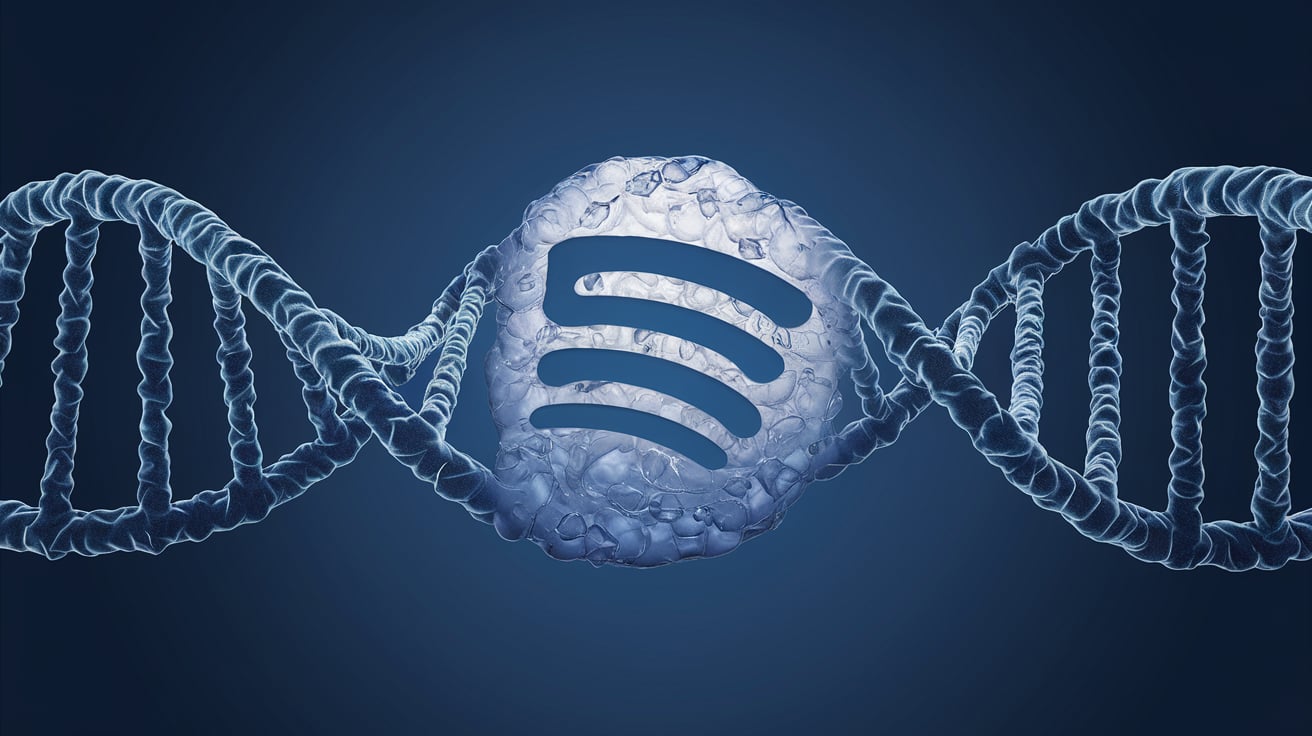Introduction to Spotify and Its Algorithm
Spotify has emerged as a preeminent force in the realm of music streaming, offering users a vast library of songs, curated playlists, and personalized recommendations. Launched in 2008, Spotify has continually evolved to meet the needs and preferences of its diverse user base. One of the distinct features that set Spotify apart from its competitors is its sophisticated algorithm, which leverages data to enhance user experiences. By utilizing cutting-edge technology, Spotify effectively analyzes listening habits, preferences, and trends, allowing the platform to deliver tailored content to each individual user.
At the core of Spotify’s success lies its ability to facilitate personalized music listening experiences. By harnessing advanced machine learning techniques and artificial intelligence, Spotify processes an immense amount of data from millions of users. This data is crucial in crafting unique user profiles that outline distinct musical tastes, varying from genres to specific artists. The insights derived from this comprehensive analysis enable Spotify to generate precise recommendations, ensuring that users are continually exposed to music that aligns with their preferences.
The concept of Spotify DNA emerges prominently as we delve deeper into how the platform operates. This metaphorical term encapsulates the intricate layers of algorithms employed by Spotify to curate music for each individual. The algorithm considers not only direct user engagement—such as songs listened to, skipped, or saved—but also contextual factors, including time of day and location. Ultimately, Spotify’s focus on data-driven approaches allows it to refine and enhance the array of auditory experiences it provides, ensuring each user enjoys a personalized soundtrack tailored to their unique preferences.
The Evolution of Music Discovery on Spotify
The journey of music discovery has undergone significant transformation over the years, transitioning from traditional methods to the dynamic digital landscape we experience today. Initially, music lovers relied heavily on radio stations, physical records, and recommendations from friends. However, the rise of streaming services, particularly Spotify, has revolutionized how individuals discover and engage with music.
Launched in 2008, Spotify introduced listeners to an extensive library of music at their fingertips, marking a pivotal shift in music consumption. With a user-friendly interface and the availability of millions of songs, Spotify began attracting a massive user base, generating an organic demand for personalized music experiences. This demand spurred the evolution of various features aimed at enhancing music discovery.
One of the cornerstone advancements of Spotify is its powerful recommendation algorithms. By analyzing user listening habits, these algorithms curate personalized playlists such as Discover Weekly and Release Radar. These features utilize the concept of “Spotify DNA,” so to speak, as they rely on complex data structures to understand and anticipate users’ musical preferences. Over time, as users interact with the platform, the algorithms become more attuned to individual tastes, leading to more accurate recommendations.
Moreover, Spotify’s introduction of collaborative playlists and social sharing options has further enriched the music discovery experience. Users can now engage with friends and share their discoveries seamlessly, transforming subtle listening habits into a communal affair. The integration of curated playlists compiled by industry experts and influencers broadens the scope of what users can explore and enjoy.
This evolution indicates a broader trend in how music is consumed and enjoyed, driven by technology and user engagement. The continued enhancement of Spotify’s features exemplifies an ongoing commitment to delivering a personalized music discovery experience that resonates deeply with its audience, effectively portraying the essence of what “Spotify DNA” represents. As music discovery continues to advance, users can expect further innovations that enrich their interactions with music.
Understanding Spotify DNA: A Deep Dive
At the core of Spotify’s immersive user experience lies the concept of Spotify DNA, a sophisticated framework that empowers the platform to deliver personalized music suggestions tailored to individual tastes. The term encompasses a wide array of data collection methods, machine learning techniques, and complex algorithms designed to decode user preferences and behaviors.
Spotify leverages various types of data to build a comprehensive profile of each user. This data includes listening history, search queries, playlist engagements, and user-created content. By analyzing this information, Spotify develops insights into listeners’ musical inclinations, allowing the platform to curate playlists, recommend songs, and feature artists that align with specific tastes. For example, data regarding song skips, repeat plays, and playlist additions inform the algorithms about user satisfaction and engagement levels with particular tracks.
Furthermore, Spotify DNA integrates contextual information, such as geolocation and time of day, providing an additional layer of personalization. By understanding where and when listeners engage with the app, Spotify can recommend music that fits various moods and situations. This level of contextual sensitivity enhances the overall user experience, making it more relevant and engaging.
The underlying algorithms of Spotify DNA employ collaborative filtering, where user patterns are analyzed across a broad user base to identify similarities among different listeners. This method enriches the recommendation system, enabling the platform to suggest music that a listener may not have discovered independently. Additionally, natural language processing techniques are utilized to analyze reviews and articles about music, providing further insights into trends and popular sentiments surrounding various artists and genres.
Overall, Spotify DNA encompasses a multi-faceted approach to data collection and analysis, ensuring that user experiences are personalized to a remarkable degree, which is critical in a highly competitive music streaming industry. The efficacy of this framework continually evolves as Spotify refines its understanding of listener preferences and industry patterns.
The Role of Music Metadata in Personalization
In the landscape of digital music streaming, the efficacy of services like Spotify is heavily reliant on the precise utilization of music metadata. This structured information encapsulates crucial details about a song, including its genre, tempo, instrumentation, and lyrical content. For Spotify, the management and application of this metadata play a fundamental role in the personalization of user experiences, forming the backbone of its recommendation system.
By categorizing tracks through their metadata, Spotify can create detailed profiles of user preferences. For example, an individual who frequently listens to upbeat electronic music will receive recommendations that highlight similar tracks, drawing on tempo and genre indicators. The algorithm analyzes not just what users listen to, but also how they engage with music, such as the duration of plays and skips. Consequently, the service fine-tunes recommendations to enhance the listener’s experience, yielding a personalized playlist that resonates with their unique tastes.
Furthermore, lyrical content acts as another layer of classification for songs, allowing Spotify to understand the emotional context or themes of a track. This can be particularly important for users searching for music that fits specific moods or activities. In this sense, metadata does not merely serve as a cataloging tool; it transforms a user’s music journey by facilitating the discovery of songs that align closely with their emotional landscape.
As the use of metadata becomes increasingly sophisticated, the Spotify DNA evolves, paving the way for ever more personalized experiences. The integration of user interactions with rich metadata is fundamental to creating a cohesive music environment that caters to individual preferences, thereby defining the dynamic relationship between users and the music they love.
User Behavior and Listening Habits: Key Dataset
Spotify DNA relies heavily on the analysis of user behavior and listening habits to construct personalized music experiences. This process begins with the extensive collection of data on user interactions with the platform. Each time a user skips a song, adds a track to a playlist, or saves a favorite, this information is captured and recorded in real-time. Utilizing sophisticated algorithms, Spotify analyzes these interactions to develop a comprehensive understanding of individual preferences.
In addition to tracking user engagement, Spotify also gathers demographic information and contextual data, such as geographical location, time of day, and device type. This multifaceted approach allows the platform to refine its recommendations further, tailoring suggestions to specific audience segments. If a user consistently listens to alternative rock during their morning commute, Spotify can recognize this pattern and recommend new releases or playlists that align with these listening habits.
User feedback, such as the thumbs-up or thumbs-down ratings on songs, also plays a crucial role. Each piece of feedback serves as a valuable input in the Spotify DNA framework, helping to finetune the algorithms that govern song recommendations. Moreover, collaborative filtering methods compare a user’s preferences with those of similar listeners, revealing songs that may not have been considered but are likely to resonate. By aggregating data across its millions of users, Spotify can identify trending songs and emerging artists, providing insights into the overall popularity of specific genres and tracks.
Ultimately, the continuous analysis of user behavior and listening habits is essential for Spotify to enhance its music recommendation system. By leveraging these insights, Spotify DNA not only illuminates individual tastes but also contributes to the larger narrative of music consumption trends in the digital age.
The Impact of Machine Learning on Recommendations
In recent years, the influence of machine learning on music streaming platforms has revolutionized how listeners engage with their favorite songs. Spotify leverages advanced machine learning algorithms to refine its recommendation system, which is central to creating personalized music experiences for its users. This technology is at the core of Spotify DNA, as it allows the platform to analyze vast amounts of data and extract meaningful patterns and trends.
One of the primary techniques employed by Spotify is collaborative filtering. This method relies on user interaction data, such as song listens, likes, and playlist additions, to determine relationships between users and songs. By analyzing this data, collaborative filtering can identify similarities among users with analogous listening habits, thereby suggesting songs that a specific user may enjoy based on the preferences of similar listeners. This approach has significantly improved the relevance of song recommendations, aligning them closer to individual tastes.
Another powerful algorithm used by Spotify is the neural network. Neural networks can process complex and multidimensional data, making them adept at capturing the nuances of musical preferences. Through deep learning, these networks can discern intricate patterns in users’ listening behavior, enabling Spotify to make highly tailored recommendations. For instance, if a user frequently listens to a particular genre or artist, the system is designed to suggest tracks that embody similar attributes, thus enhancing the user’s musical journey.
These machine learning techniques not only improve the accuracy of song recommendations but also foster heightened user engagement. By continually refining its understanding of user preferences through Spotify DNA, the platform remains at the forefront of delivering a personalized experience, ensuring that every user feels connected to the music they love.

Creating Personalized Playlists: Discover Weekly & Beyond
Spotify has revolutionized the way music is experienced by creating highly personalized playlists such as Discover Weekly and Release Radar, which are integral components of its unique Spotify DNA. These playlists cater to individual user preferences utilizing advanced algorithms that analyze listening habits, genre preferences, and engagement patterns. The resultant playlists not only offer a tailored listening experience but also help users discover new music that aligns with their tastes.
Discover Weekly, launched in July 2015, is an innovative playlist that updates every Monday, providing users with a fresh selection of tracks. Spotify DNA comes into play by meticulously analyzing billions of data points, from song metadata to user behavior, helping identify songs that resonate with each listener. When a user interacts with the playlist—whether by liking, disliking, or skipping songs—the feedback further refines the algorithm’s understanding of the individual’s musical preferences.
Release Radar, another popular playlist, showcases newly released tracks from artists that a particular user has shown interest in. This feature highlights the dynamic aspects of Spotify DNA, as it continually evolves based on new music releases and the user’s engagement with similar genres or artists. By combining various factors, such as previous listening history and playlist interactions, these personalized playlists foster not only user satisfaction but also deeper connections with artists and music.
As listeners engage more with their personalized playlists, Spotify DNA gathers deeper insights, further enhancing the curation process. This feedback loop ensures that the music recommendations are not static but continually adapting to the user’s evolving musical preferences. The success of Discover Weekly and Release Radar exemplifies the importance of understanding individual user tastes, ultimately creating music experiences that feel both personal and ever-refreshing.
Challenges and Ethical Considerations in Personalization
The evolution of Spotify’s personalized music recommendations, referred to as its “Spotify DNA,” represents a significant advancement in the realm of digital music consumption. However, this sophisticated approach to personalization presents various challenges and ethical considerations that must be addressed. At its core, the balance between user privacy and data-driven recommendations remains a primary concern. Spotify relies heavily on user data to curate individualized playlists and suggest new artists, which necessitates robust data management practices.
Data security is paramount given the vast amount of personal information users share when engaging with the platform. Breaches in data security can lead to unauthorized access, potentially compromising user identities and sensitive information. As a result, Spotify must implement stringent measures to protect user data while still leveraging it to enhance the music experience. Additionally, the ongoing debate surrounding user consent illuminates the complexities involved in data collection. Users may not fully understand the implications of their data sharing, raising questions about informed consent and the extent to which they should control their own data.
Moreover, the potential influence of the echo chamber effect within Spotify’s recommendation algorithms poses a complex challenge. Personalized music experiences can lead users to become trapped in a cycle of consuming similar genres or artists, limiting exposure to diverse sounds. This creates a potential issue of stagnation in music exploration, contrasting with the platform’s intention to broaden users’ musical horizons. Understanding how to critically navigate user preferences without narrowing their experiences is a delicate balance that Spotify must strive to maintain.
In addressing these challenges, Spotify’s commitment to ethical personalization is crucial. By fostering transparency, prioritizing user autonomy, and actively working to mitigate risks associated with data security and echo chambers, Spotify can enhance its service while respecting user rights and improving the overall music experience.
Future of Spotify DNA and Music Streaming
The future of Spotify DNA holds significant potential for reshaping the music streaming landscape. As technology continues to advance, we can expect a deeper integration of artificial intelligence (AI) and machine learning algorithms that will refine how users interact with music platforms. The preliminary results stemming from Spotify’s DNA methodology have already demonstrated its effectiveness in curating personalized playlists and recommendations that resonate closely with individual listener preferences.
One of the most exciting prospects is the development of even more sophisticated recommendation systems. These innovations could harness vast amounts of data from global listening habits, cultural shifts, and social media trends, offering a more comprehensive understanding of music tastes. By analyzing user interactions not only with songs but also with genres and broader cultural content, Spotify DNA could evolve to create highly personalized user experiences that adapt in real-time.
Furthermore, the role of AI in music creation itself is likely to see growth. Collaborative tools may emerge that allow users to interact with AI-generated music, blending human creativity with algorithmic composition. Such advancements could facilitate new genres and styles that reflect the collaborative nature of contemporary music consumption. The Spotify DNA system could eventually enable musicians to personalize their works for specific audiences, creating dynamic and interactive listening experiences.
Moreover, augmented reality (AR) and virtual reality (VR) technologies hold promise for immersive music discovery. Users may soon be able to explore music environments that are shaped by their unique Spotify DNA profiles, facilitating a more holistic approach to music exploration. We are witnessing the rise of an era where technological enhancement could redefine the boundaries of music engagement, presenting music not merely as an auditory experience but as a multi-sensory one.
In conclusion, the future of Spotify DNA signifies an innovative evolution in music streaming, harnessing AI and technological advancements to foster enhanced music discovery and personal engagement across diverse audiences.
you may also read


